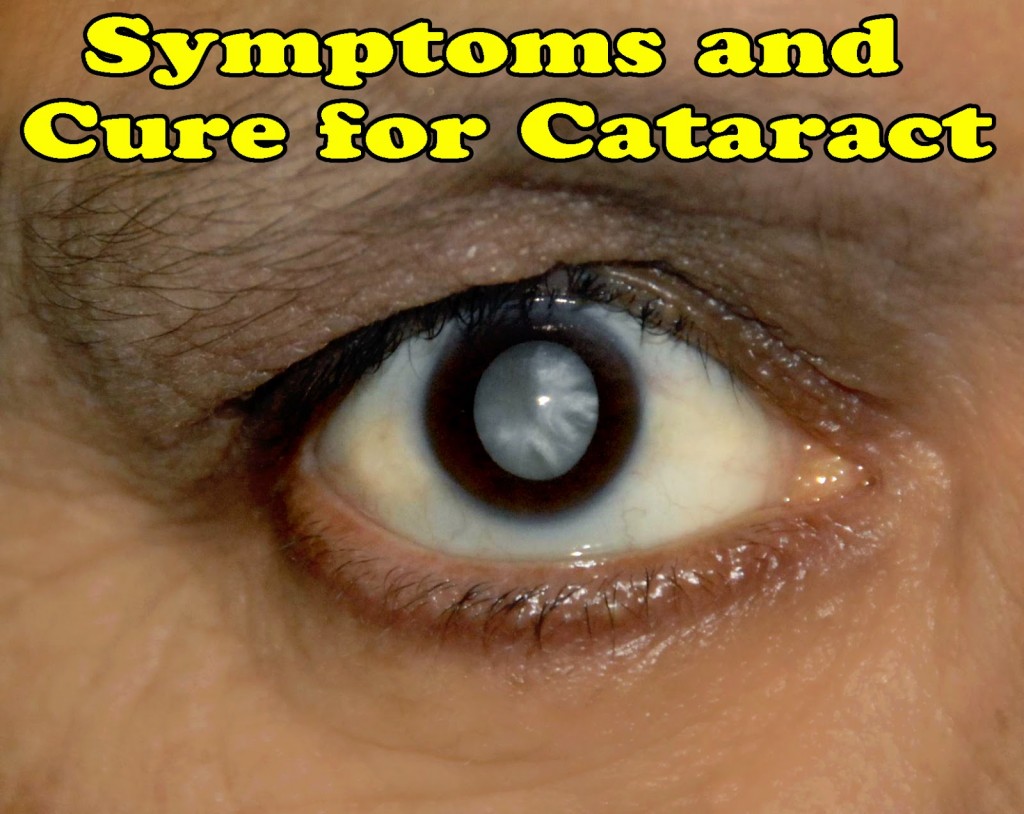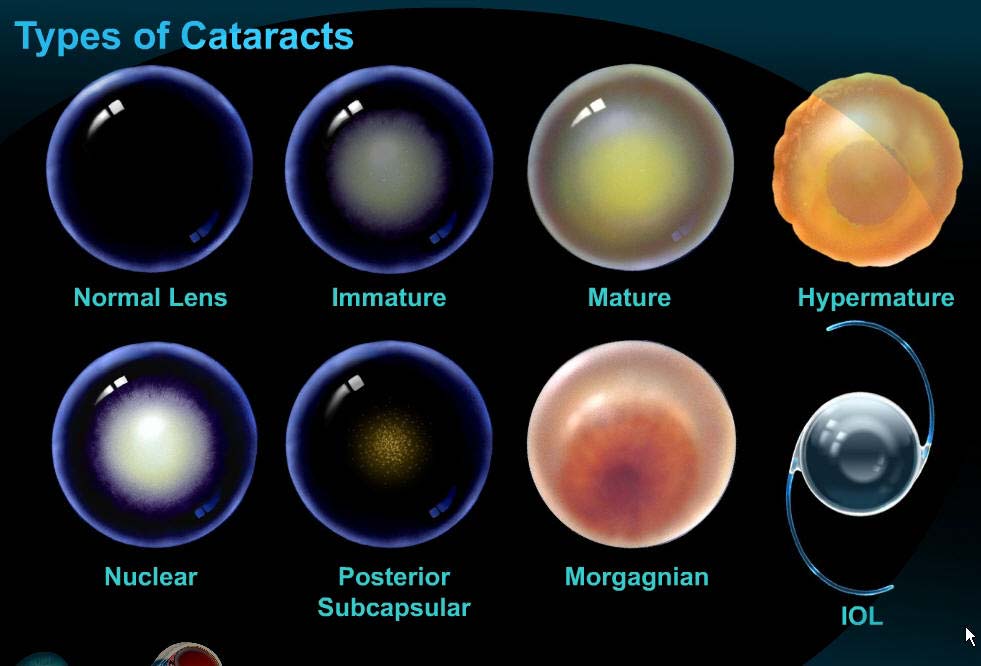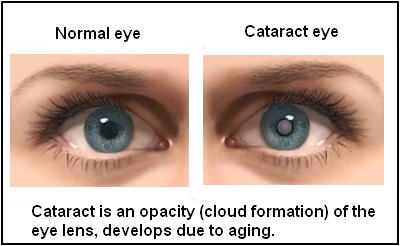A cataract is the clouding of the normal and natural clear lens of your eyes that lies behind the pupil and the iris. This eye condition develops slowly and subsequently interferes with your vision. Most of the cataracts are related to aging and they are major causes of blindness worldwide. An individual with a cataract in one eye has the chances of developing a cataract in the other eye as well. According to Prevent Blindness America (PBA), the statistical analysis of cataracts today says that it affects more than 22 million Americans over age 40 and more than 30 million Americans are expected to suffer from it by the end of the year 2020. In case of a healthy eye, the lens focuses incoming glare onto the light-sensitive retina. But if the eye lenses are opaque, the incoming light does not reach the retina. This condition can be treatable if adequate and safe cataract surgery is performed immediately after diagnosis. Since ancient times, this eye disease has been recognized and treated surgically. Know more about cataract and its types.
Different Types of Cataracts
Cataracts can be classified based on the anatomical location within the lens, causes of the cataract and the degree of clouding of the lens. The following are the types of cataracts that affects your vision.

- Nuclear Cataract: A nuclear cataract forms deep in the nucleus, which is the central zone of the lens and is usually associated with aging. The lens of the cataract gradually turns more dense yellow and clouds your vision. This condition leads to difficulty in distinguishing between color shades. It also causes more nearsightedness.
- Congenital Cataract: If a child is born with a cataract or develops one during his/her childhood, it is known as a ‘congenital cataract.’ This condition occurs if the mother has an infection during pregnancy and other disorders such as Galactosemia, Lowe’s syndrome, Myotonic dystrophy or rubella. Congenital cataract develops in one child out of 10,000 infants. It does not interfere with the child’s vision. If it happens, it is removed after detection and replaced with an artificial lens.
- Traumatic cataract: In most of the individuals, the development of cataract occurs after several years of an injury causing damage to the eye. This type of cataract is known as a traumatic cataract. It is caused due to the exposure of the eye to alkaline chemical substances or blunt trauma to the eyes.
- Cortical cataract: A cortical cataractis fully characterized by wedgelike opacities or streaks in a whitish color on the periphery of the cortex lens that surrounds the central nucleus. Gradual changes in the water content of the lens fibers make fissures or clefts that look like a spokes pointing from the outside edge towards the center of the lens. This type of cataract is usually associated with glare related vision problems.
- Radiation Cataract: This type of cataract develops after exposure to certain types of radiations like ultraviolet radiations. Prolonged exposure to sunlight increases the risk of developing radiation cataracts. If a patient undergoes radiation therapy for cancer, he or she is at risk of it too.
- Secondary cataracts: Secondary cataracts are caused commonly by diseases such as diabetes and glaucoma or certain steroid medications like Prednisone. This type of cataract also occurs after surgery for other eye related diseases such as glaucoma.
- Subcapsular cataract: It occurs as a small, opaque area at the back of the lens. It often interferes with reading and reduces your vision, creating glare and halo effects around bright lights. People those who suffer from diabetes or those who consume high doses of steroids have a higher risk of developing a subcapsular.
Common Symptoms of Cataracts
At an acute stage, the cloudiness in your vision which is caused by a cataract may affect only a little part of your eye’s lens, and you may be unaware of any loss of vision. As the cataract grows to the next stage, it clouds more of your lens and deforms the light passing through your lens. You’re more likely to observe the signs and symptoms at this level. If you notice any of these symptoms, seek your eye care professional immediately for help. The Common Symptoms of Cataracts include:
- Cloudy, blurry or dimmed vision
- Poor vision during night-time
- Increased sensitivity to glare, headlights, lamps or bright sunlight.
- A halo may be visible from lights
- Double vision or multiple images in the affected eye
- Frequent changes in contact lenses or eyeglass prescription
- Colors appear faded
Risk Factors for Cataracts
The following are the risk factors that are associated with cataracts
- Family History
- Obesity
- Too Much Exposure to Sun
- Smoking
- Heavy Alcohol Drinking
- Aging
- High Blood Pressure
- Eye Injuries
- Prolonged use of medications
Treatment for Cataracts
- Cataracts are removed effectively by surgery when vision impairment begins to interfere with daily activities like reading or driving.
- Surgery mainly involves the removal of the cloudy lens and replacement with a clear, synthetic intraocular lens (IOL).

- Phacoemulsification and Extracapsular surgery are the two surgical methods for preventing cataracts completely.
Cataract surgery is very successful in restoring vision without any complications. Apart from this, maintaining healthy lifestyle habits and reducing your risk factors will also help you to get rid of cataract problems quickly. Regular checkups and proper lifestyle changes will keep your eyes in healthy condition!
Image Credits: eyeproblems.uk.com, 4.bp.blogspot.com, healthy-ojas.com, eyesitemd.com

It’s interesting to know that one way of effectively treating a cataract is by undergoing a cataract surgery that can be completed without any complications. My mother is looking to have her right’s eye cataract to be treated. She just wants to undergo a single procedure to have it treated, and it’s important for me to ensure the safety of the cataract surgery that she will consider. I will make sure to share your blog with my mother so she can consider a cataract surgery. Thanks!